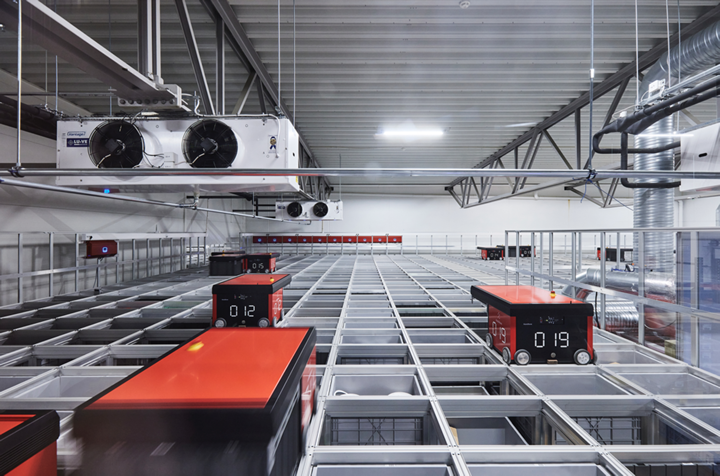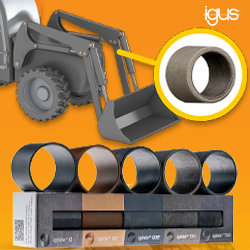Enhancing Reverse Logistics: How Automation Tackles Challenges and Delivers Efficiency

Reverse logistics, the process of managing returned, recycled, repaired, or recalled products, has become an integral part of modern business operations. According to Gartner, the global reverse logistics market was valued at over $768 billion in 2023 and forecasted to surpass $3 trillion roughly within the next decade. While returns are an inevitable part of retail, especially in e-commerce, they are expensive, time-consuming, and logistically complex. However, leveraging automation can sharpen efficiency, cut costs, and boost customer satisfaction.
Challenges in Reverse Logistics
Reverse logistics poses several challenges for businesses. Businesses experience a high volume of returns and processing these returns is labor-intensive. E-commerce has fueled the increase in returns as well as increased return rates, further straining operations. Another challenge is managing customer expectations. Over 80% of online shoppers will avoid retailers who don’t provide free or simple return policies, underscoring that poorly handled returns affect customer loyalty and customer retention.
The cost of returns also plays a factor in the complexity of reverse logistics. Returns create additional freight, inspection, and warehousing costs. For instance, retailers in the United States lost $816 billion in sales in 2022 due to returned merchandise. Ignoring these challenges is no longer an option. Smart businesses are turning to automation as a powerful solution to streamline their reverse logistics processes.
Best Practices for Automating Reverse Logistics
1. Invest in Robust Automation Systems
Automation offers significant potential for improving reverse logistics. By automating specific processes, businesses can save time, reduce waste, and enhance customer satisfaction. Innovative goods-to-person technology helps warehouses process and return products to inventory with greater speed and accuracy.
2. Grade and Restock Returns Quickly
Returned items need swift processing to minimize inventory shortages and maximize resale opportunities. An automated system can route returned products to designated bins instantly, eliminating multiple touchpoints, delays, and human errors. With smart technology, businesses can automatically sort and grade returned products based on condition and resale potential, direct items to the right channel (whether it's restocking, discounting, refurbishment, or recycling), and streamline return-to-stock workflows.
3. Leverage Data and Predictive Analytics
Automation enables businesses to analyze return data in real-time. By tracking reasons for returns, retailers can improve product descriptions, enhance quality control, and resolve recurring issues. Data-driven insights make returns prevention and workflow optimization more effective, all in an effort to minimize return rates.
4. Streamline Workflow with Integrated Systems
A major challenge in return processing is inefficiencies caused by disconnected systems. Automated solutions need to integrate seamlessly with other warehouse processes, such as conveyors and autonomous mobile robots (AMRs). These integrated workflows reduce errors, enhance coordination, and improve productivity.
5. Use Vertical Space to Optimize Storage
Returns take up valuable warehouse space and traditional warehousing systems may struggle with the high space demands of reverse logistics operations. Automated storage and retrieval systems (ASRS) use vertical storage to maximize capacity. Returned products can be stored vertically in compact bins and restockable items can be prioritized for fast resale. Vertical storage also allows for reduced unnecessary handling and shorter walk times on the floor. This storage approach increases storage density, accelerates professing, and aids operations during peak return seasons while improving space utilization and operational efficiency.
6. Outsource to Specialized Providers Where Needed
For companies struggling with labor-intensive returns processing, partnering with a third-party logistics (3PL) provider can be a strategic move. Many 3PLs offer automated returns handling, leveraging robotics and AI to efficiently process high volumes of returns. Partnering with experienced providers ensures that even complex tasks, such as individual product grading and recycling, are handled efficiently so businesses can spend more time on core operations.
Benefits of Automating Reverse Logistics
By integrating an ASRS, a business gains competitive advantage in the marketplace. Automation expedites the returns cycle, enabling workers to process items faster and customers to receive refunds or replacements more quickly; thus, improving operational efficiency. Also, faster processing, better space utilization, and minimized errors cut labor, storage, and operational costs. Automated systems also facilitate sustainable returns management, helping companies recycle, repair, or responsibly dispose of products. This aligns with growing environmental expectations in the industry. With e-commerce expanding and returns becoming more frequent, automation equips companies to scale operations without overwhelming logistics systems.
Future Trends in Reverse Logistics Automation
It’s important to keep in mind that the future of reverse logistics will be driven by multiple factors. AI and machine learning will continue to be used for the prediction of return trends and inventory optimization. Blockchain technology will be used for enhanced tracking and fraud prevention. Sustainable automation will be leveraged to minimize waste and carbon footprints while urban automation hubs will be used to expedite returns processing in major metro areas.
Reverse logistics is a challenging but essential part of modern retail. While managing returns and restocking goods is inherently costly and complex, automation offers a path to efficiency. By adopting automated storage and retrieval systems, businesses can streamline workflows, save money, and enhance customer satisfaction. Whether it's reduced processing times, optimized storage, or data-driven insights, automation helps transform reverse logistics from a pain point into a competitive advantage.
Comments (0)
This post does not have any comments. Be the first to leave a comment below.
Featured Product

